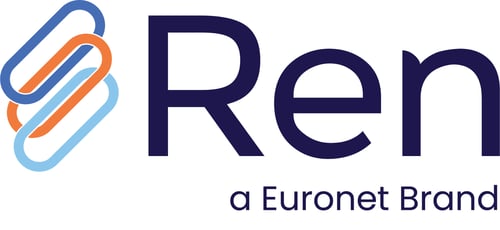The Transformation of ATM Management
4 Keys to Staying Ahead
The ATM has come a long way since its inception in the late 1960s. Originally designed as a simple cash dispenser, ATMs have evolved into more sophisticated banking machines that offer a wide range of cash management services to customers. While cashless payment technologies are advancing, cash is by no means disappearing. It remains vital in the economy, even as habits and technologies evolve.
According to the Atlanta Federal Reserve, cash in circulation has increased sharply since the pandemic – 28% since 2020. The amount of cash held by individuals as a store of value has also grown. Although the number of cash withdrawals has declined slightly, consumers are withdrawing much more per ATM transaction than a few years ago. In the USA, the average amount of cash adults held on their person grew from $68 to $73 in 2023 (according to data from the Federal Reserve System’s FedCash Services). This represents a value increase of around 7%.
For consumers and merchants who are dependent on cash, ATMs are vital. In areas where banks have closed branches to lower costs, ATMs and self-service kiosks provide the only community-based access to banking services. These industry trends are impacting the operational costs of ATMs and the cash supply and adding complexity to the overall management of this vital channel.
To maintain an edge in today’s highly competitive environment, banks must find innovative ways to accommodate these preferences while maintaining costs and efficiencies. Optimizing the value delivered through the self-service channel enables the delivery of personalized customer journeys, informative messages and marketing promotions. Customers want to perform financial tasks on their own terms, and forward-thinking banks continue to enhance ATMs to meet this demand.
Providing a Digital-First ATM
As the ATM evolves toward a fully-fledged self-service channel, contactless or cardless ATM transactions are bridging the gap between mobile-first or mobile-only consumers and the world of cash. Contactless ATMs make it easy for customers to initiate transactions using a banking app on their smartphone. With these technologies, transactions can be processed more quickly and securely, leading to shorter wait times and fewer errors. The technology has cut transaction times from 45 seconds down to about 10 seconds (Bloomberg Technology report).
Cardless ATM transactions are not just limited to cash withdrawals. Users can also make cash deposits, check balances, and perform other transactions using their mobile devices such as bill payments, money transfers, currency exchange, charity donations, and prepaid card loading.
Optimizing the Cost of Cash
Managing cash volume and replenishment for ATMs can be a complex puzzle and is an increasing cost for financial institutions. Implementing advanced cash management features allows banks to optimize their cash handling processes and improve their overall cash management efficiency. One of these advanced features is cash recycling.
Cash recycling allows ATMs to accept, validate, and dispense cash in the same transaction. This feature not only reduces the need for cash replenishment but also improves cash management by recycling cash within the machine. By recycling cash, banks can reduce their overall cash handling costs and minimize the risk of cash shortages. This feature is especially beneficial for high-traffic ATM locations where cash turnover is high.
Customizing the Customer Experience
As financial institutions look to differentiate themselves in a crowded and rapidly moving industry, the customer experience within the self-service channel is becoming more important. Because most organizations place responsibility for the ATM’s “look” and “feel” with their marketing departments, leading solutions are providing the flexibility to allow marketing personnel to easily incorporate the institutions branding, manage “look” and “feel” items, and initiate marketing campaigns through the ATM without assistance from IT.
Through a single screen design with “drag & drop” functions, anyone can create and customize screens, transaction flows and receipts as well as manage these assets.
Marketing personnel are also able to easily configure marketing campaigns (both targeted and non-targeted) within the self-service channel. Whether it is pre-transaction, in-process, or post-transaction, campaigns can be added at various points during the standard transaction flow.
The Technology to Bring it all Together
Legacy ATM protocols and technology are hindering the ability for financial institutions to innovate through this strategic self-service channel. Many of these protocols are largely limited to simple features like balance inquiry, cash withdrawal, and deposit. To truly meet the demands of the digital-first customer and deliver the right services and customer experience, modernization of the ATM network is essential.
With next-gen protocols and device driving software, institutions now have the flexibility to improve operational efficiency and deliver new and innovative services to their customers. Alongside being cloud-native and highly secure, institutions can have access to a single web-based portal for centralized management and monitoring of transactions in real-time, streamlined transactional troubleshooting, and ability to launch advanced features to market quickly.
For more insights on optimizing your self-service channel, download our recent whitepaper Guide to Navigating the Complexities of ATM Management here to see how Ren's comprehensive tools and features can transform your ATM management, enhance customer experience, and streamline banking operations. If you have questions or want to talk to an ATM solution specialist, tell us a little about yourself here.
Learn more about the REN Payments platform here.
Read More About:
Card Issuing
Switching
ATM Management
Payment Platform
Dynamic Currency Conversion
Payment Hub
Real-Time Payments
Comments


